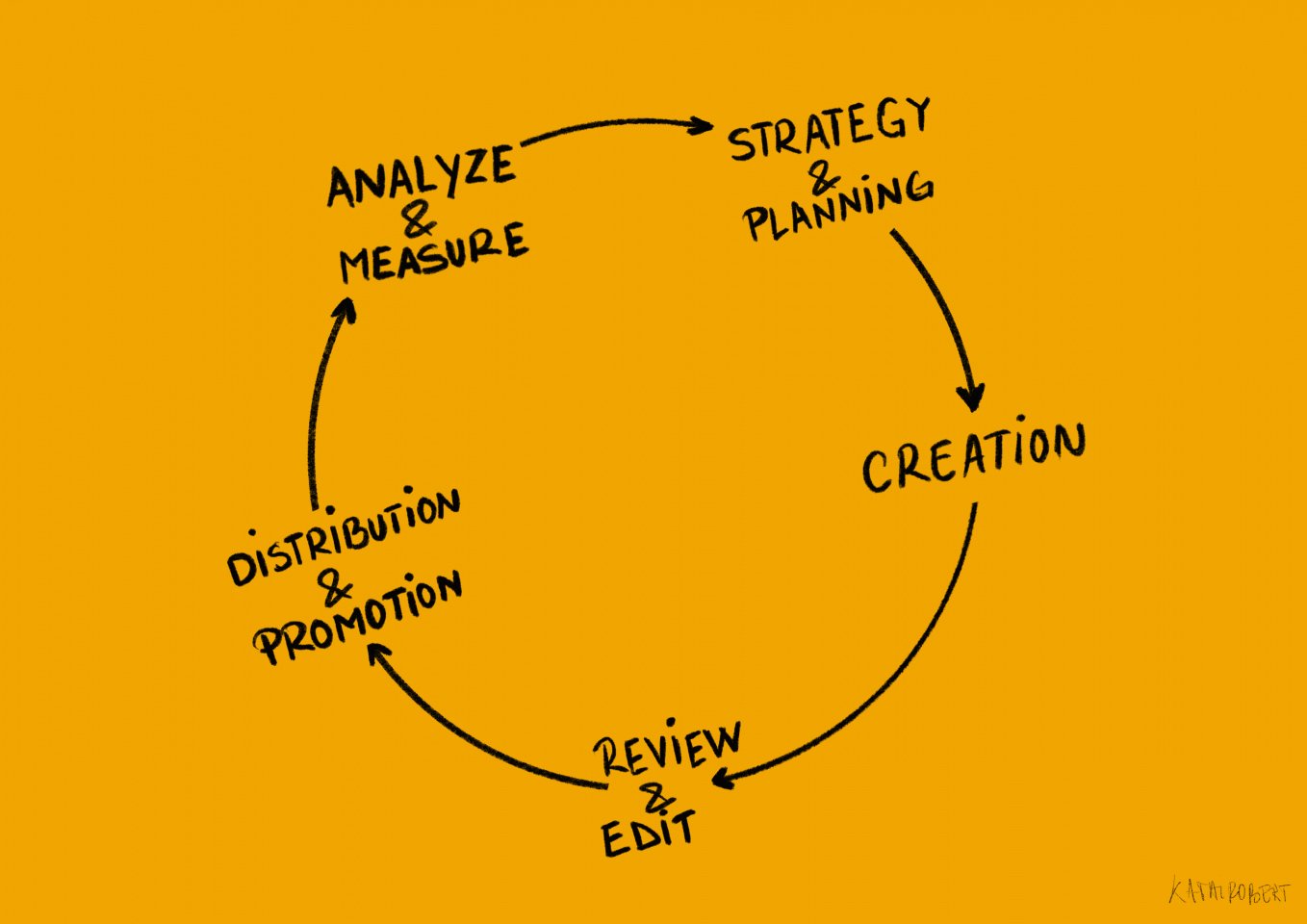The content team at HubSpot looks entirely different from the content team at your favorite 10-person startup. The content team at your favorite 10-person startup looks completely different from a one or two-person, founder-led company. That is why today we at Render Perfect Productions wanted to look at some of the best practices for structuring a content marketing team for your brand or business.
Starting Place
Creating a content team for the better part of the last 10 years has primarily been built up of two types of people. Content creators and content optimizers.
But over the last few years, a lot of things have changed.
Social media channels have become noisier than ever.
Algorithms have become more sophisticated than ever.
Audiences are spending a ton of time on more diverse channels than ever.
And the amount of content that you’re competing with on a regular basis is higher than ever.
The result?
It’s never been harder to create a content marketing engine that works.
A few years ago, you could create a handful of blog posts that shared six or seven strategies for unlocking growth and it would go viral in your niche just by hitting publish and having a click friendly headline. But today…
Hitting publish isn’t enough. You need to make sure that your content is algorithm friendly and that it’s actually being spread on the channels that your audience is spending time on.
So what should your content team look like today?
You keep the creator and optimizer, but you’re also going to add a new role…
You’re going to add the content distributor.
A Formula for Success
The modern content marketing team needs to have a content creator, optimizer, and distributor. What are all these roles?
Let me explain:
Content Creator: This is the person who writes new blog posts, essays, white papers, landing pages and any other content with written word. But they’re not silo’d into writing.
Depending on your niche and the opportunities in your space → This individual could be a podcaster. This individual could be a scriptwriter and TikTok video maker. This individual could interview customers and create case studies. This individual could be the storytelling and video editor. This individual could be the writer and designer. At the end of the day:
The content creator is the person who knows how to develop content worth seeing.
Content Optimizer: Once the content is created, the Optimizer is the person who comes in and makes sure that the content is set up to succeed. This is the person who adds transcriptions to videos. This is the person that ensures that the written word is optimized with keywords and appropriate headlines. This is the person who makes sure that the YouTube description is optimized for search and tags are being used. This is the person who ensures that interlinking is happening. At the end of the day:
The content optimizer is the person who knows how to ensure that your content is ready to go live.
Content Distributor: The final step in the content marketing process is what happens after pressing publish. It’s the part of the process when you take the asset created by the creator and optimized by the optimizer and ensure it’s spread across the appropriate channels.
This person takes your blog post and shares it on social media. This person takes your YouTube video and plugs it into that Facebook Group. This person takes your podcast and pitches it into a newsletter. This is the person that takes your blog post and turns it into a Twitter thread. This person takes your essay and shares it with that Subreddit. At the end of the day:
The content distributor is the person who takes what you created and distributes it forever.
The ideal modern content marketing team is a trio with three different skill sets. But there’s no question that these three skill sets have to be embraced by solo marketers in the early days before unlocking the power of true specialists. The final role not described in the trio above is the strategic / marketing leadership that guides the group.
You need to have a leadership team that not only believes in content but also gets it. If your c-suite understands the value of content, views content as an investment (not an expense) and understands how content can change their organization for the better — You’re more likely to win.
About Render Perfect Productions:
Render Perfect has been built from the ground up to service growing businesses and help them realize their full visual storytelling and digital marketing potential. We’ve created a service offering and skill-set that spans video production, post-production, motion graphic design, 3D animation, web development, and video marketing strategy. Our insight and experience allow us to help clients make better planning decisions and get more out of their video production effort.




 604 E Joppa Road
604 E Joppa Road